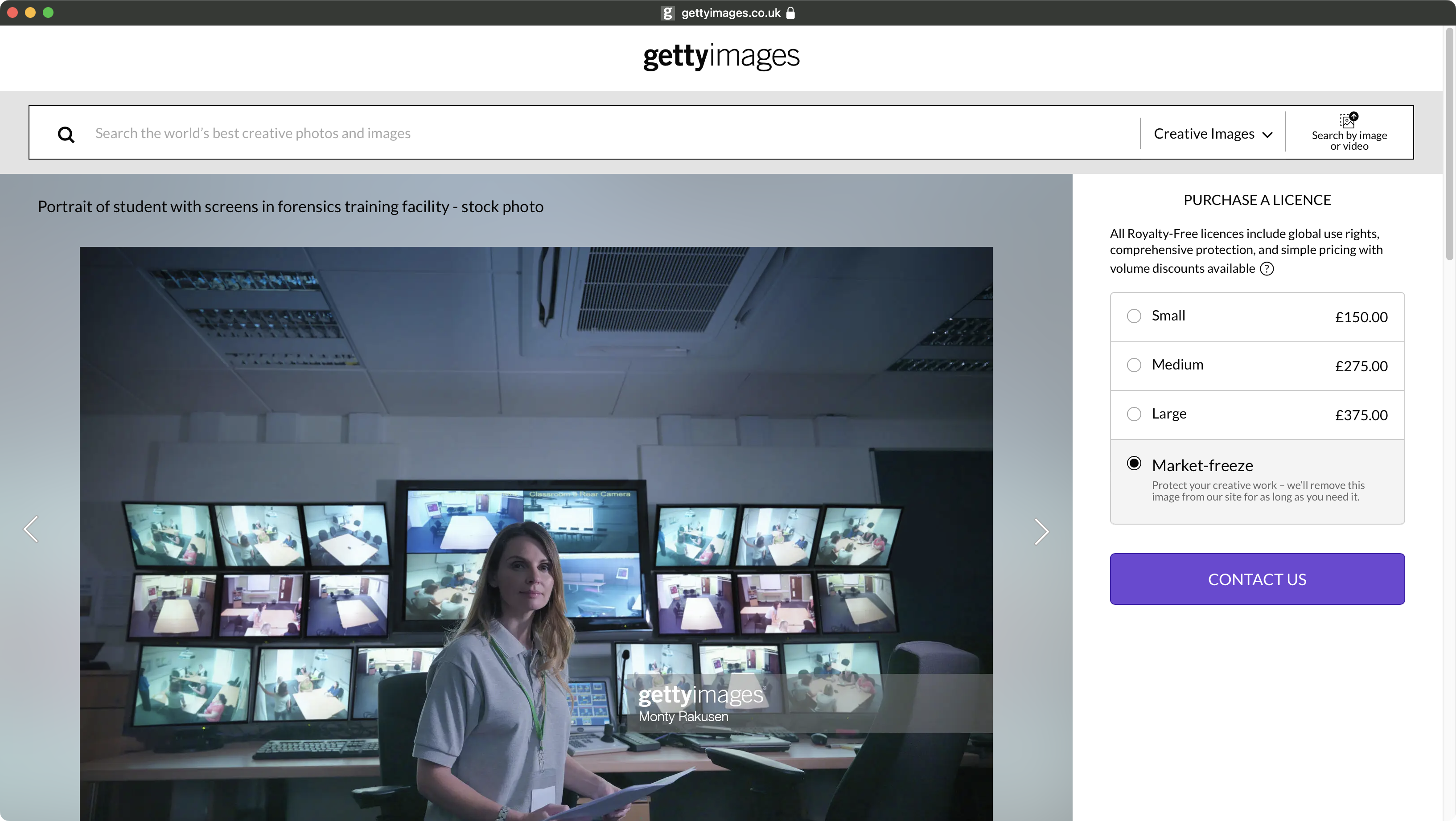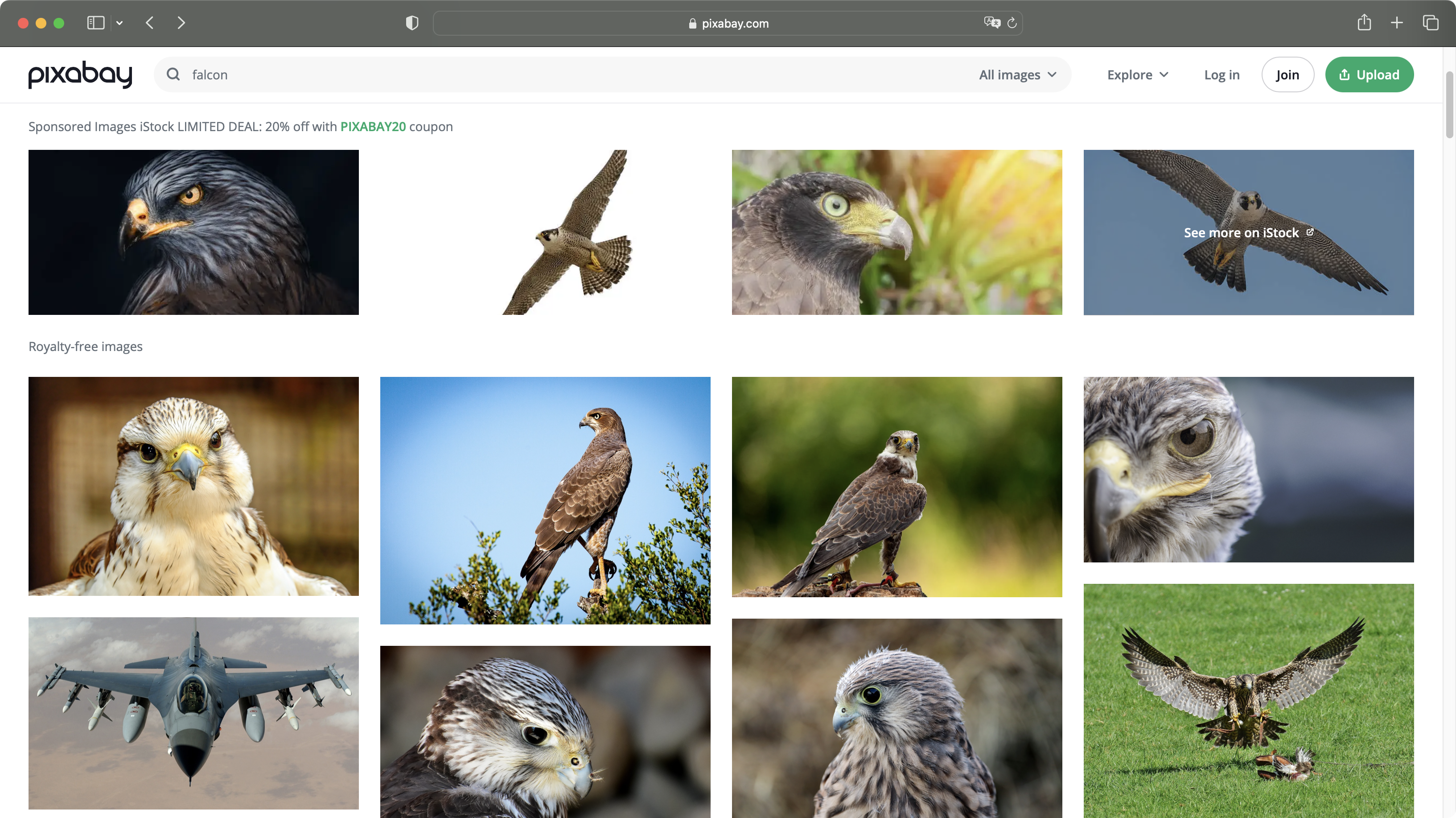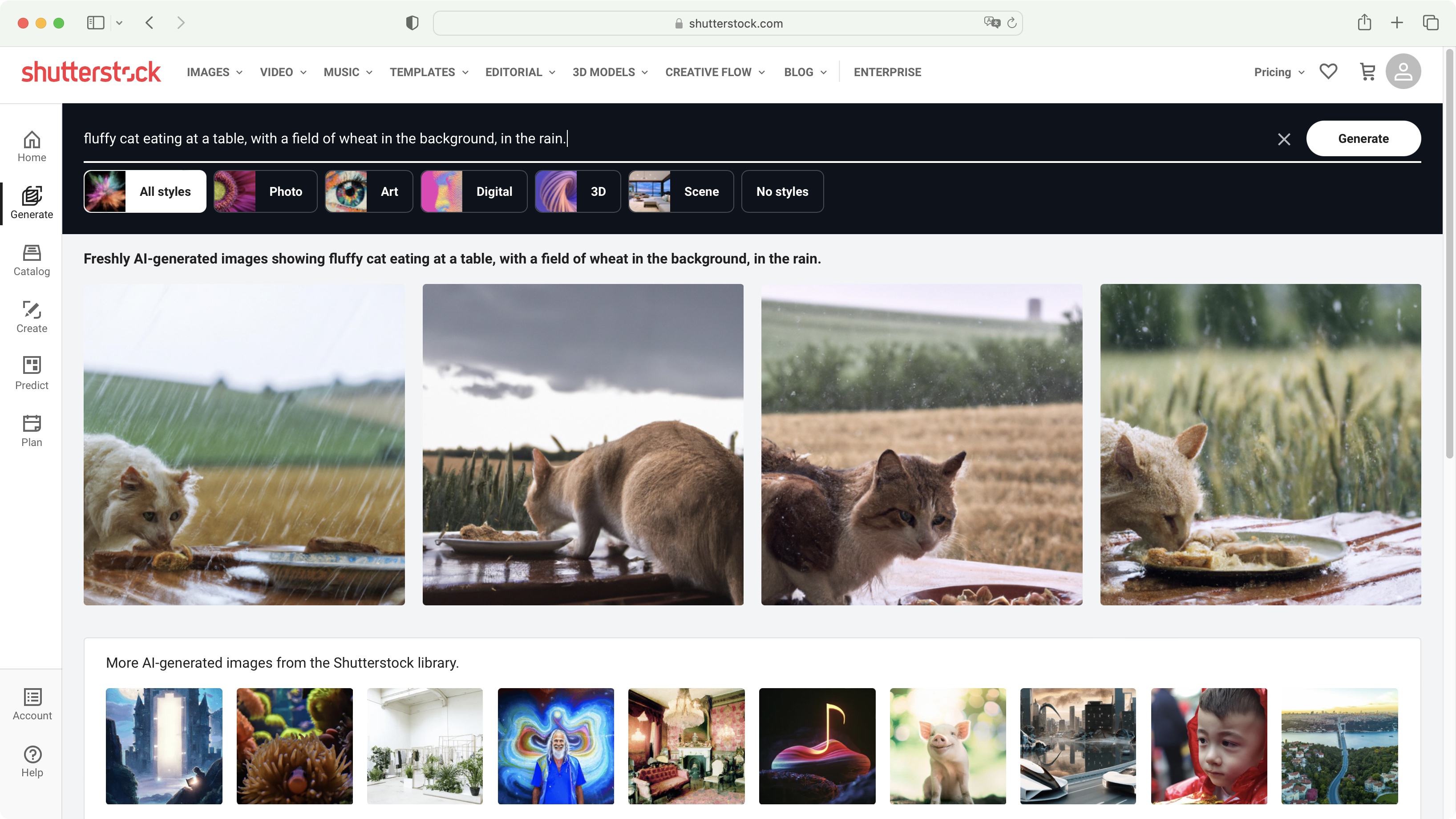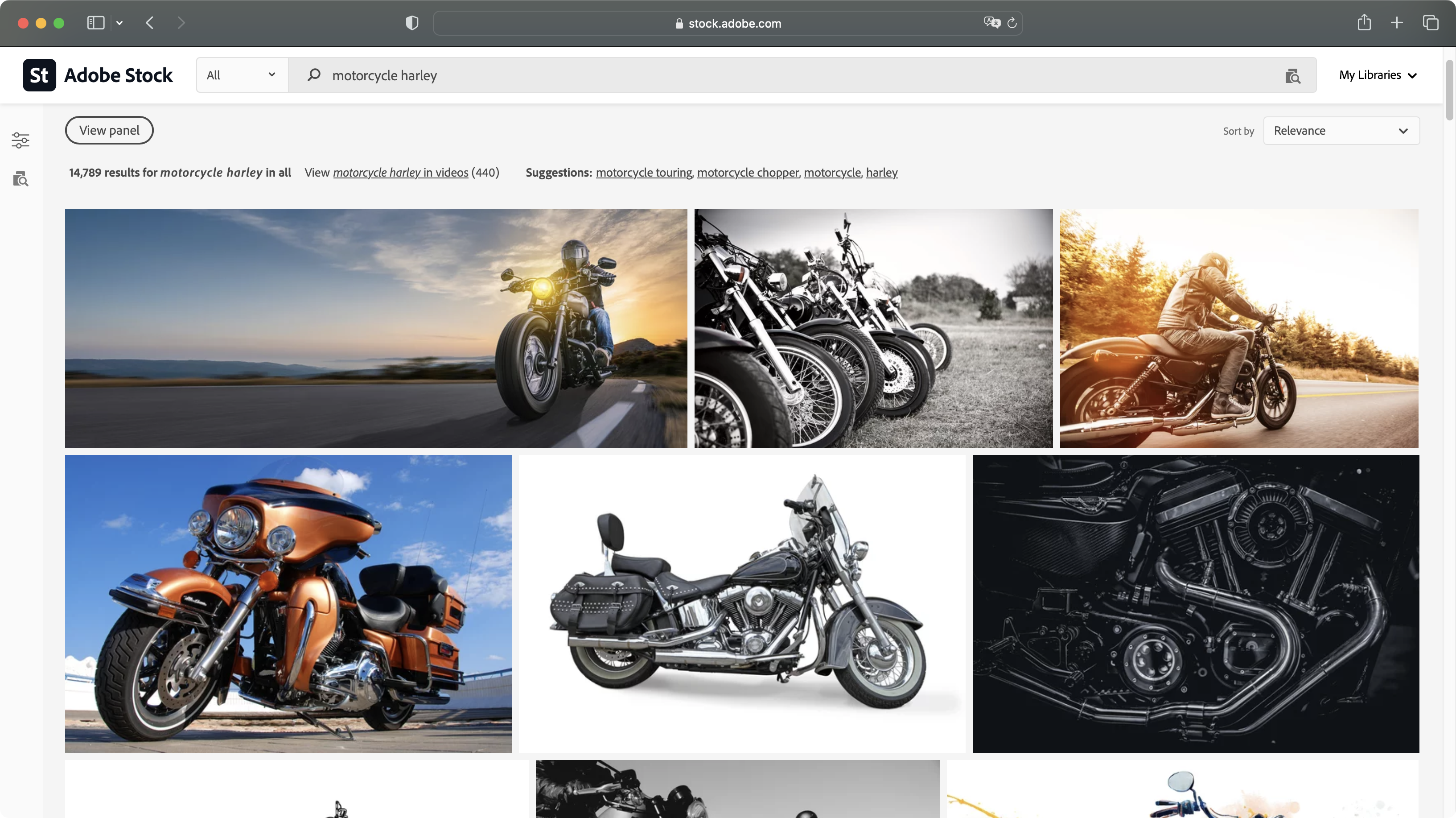Paid vs vs free stock photos: What you need to know
Paid vs free stock photos - Should you pay for media or download images free?

The internet is replete with stock photo sites offering a seemingly unlimited number of photos, video clips, illustrations, AI-generated artwork, and more. Some are totally free, others cost money.
But when it comes to paid vs free stock photos, what are the advantages and disadvantages of each, and which one should you use for your next creative project?
We've tested, reviewed, and rated the best and worst stock media libraries to help you identify the the main differences between using paid vs free stock photos.
Reader Offer: Free trial with code TRYFLEX10
Techradar editors praise Shutterstock's vast library, curated collections, content marketer tools, and variety of pricing plans. Start today with a free trial - use code TRYFLEX10.
Preferred partner (What does this mean?)
Paid vs free stock photos: Payment & plans

The simple answer is yes - for the most part. If you’re thinking of the financial cost, it’s true: there is none. Most free and reputable services you’ll find online, such as Unsplash, Pexels or Pixabay don’t even need you to set up an account. Just perform a search, find what you're interested in, and click download.
In most of these cases, you don’t even need to credit the photographer, artist, or creator (although it’s usually good practice to do so). That’s a big difference compared to paid sites, which need you to have an account to organize payment plans.
As we found in The stock photo guide: Where to buy them and how to use them on your website, paid-for sites offer genuinely free media, alongside multiple payment types, such as subscriptions and credits. These will also offer different content licensing agreements per image, particularly when using content for commercial use.
Paid vs free stock photos: Picture quality

Despite their reputation for being over-saturated, over-lit, and awkwardly stilted, free stock photos aren’t necessarily worse than paid-for media - it depends on the photographer’s skill and the site’s submission process. Yes it’s true, you’ll find some poorly shot photos on free libraries, but you might be surprised to see that some paid-for content might not be up to the quality you were expecting either.
Sign up to the TechRadar Pro newsletter to get all the top news, opinion, features and guidance your business needs to succeed!
Of course, all libraries are curated, but when you have millions to sift through, it’s not surprising that some will have somehow slipped through the net. To err is human, after all. Conversely, it’s not hard to find truly astonishing photos on free websites. If quality isn’t the advantage, why opt for a paid service?
One obvious difference would be the size of the library. This is especially true the older the service is, but it's also fair to say that artists would like to be paid for their work, and are therefore more likely to contribute to sites that remunerate them for their hard work.
But on the other side of the coin, in our reviews of all the best free stock photos sites and media libraries, we haven’t yet been unable to find at least a handful of photos matching our search criteria. Your mileage will vary of course, and you will have more choice on paid-for stock photo sites and platforms.
Paid vs free stock photos: Advantages

Unique images are a real advantage to using a service like Shutterstock, iStock, or Getty Images. Many free sites serve up the same media, which isn’t ideal if you want your latest project to stand out from the crowd with content that hasn’t already been seen elsewhere.
As an example, Getty Images offers a special exclusivity option known as ‘Market-freeze’. This grants you exclusive rights to an image, preventing others from using it for as long as you pay, of course. Such exclusive agreements don’t come cheap, and are usually the preserve of enterprises and corporations, rather than individuals and small businesses. Exclusivity is a premium. However, that doesn’t mean paid libraries are out of the reach of most, as the vast majority offer non-exclusive agreements, greatly lowering the price barrier.
Another major benefit to using professional stock content libraries - particularly for businesses - is better licensing and proper legal protections. If you’re using an image for commercial use (i.e., you’re using that image to promote a business and make money), you can’t legally download any image you like and plaster it on your website, promo video, or flyer. The exception to this is content that has a Creative Commons CC0 license. This is where the artist has given up all rights to the image and it belongs in the public domain.
Paid vs free stock photos: Licensing images

One caveat before we enter licensing territory: we are not lawyers, as such we can’t offer legal advice on the licensing of stock photos, whether free or paid. All the top sites make licensing rights clear, but if in doubt - especially over stock photos for commercial use - consult your preferred platform’s Ts & Cs or a legal practitioner.
You’ll find those terms and conditions are pretty clear, letting you know how you can use the media you’re purchasing. For instance, there could be differences between personal and commercial use, leading to different rights and prices. On paid-for sites, You pay for what you need, knowing the deal will be legally sound. With the appropriate license, you'll be able to use the media you acquire to sell products, for instance, and having that kind of security is crucial for any business.
This changes on free stock photo sites. It can be a little murky, so you need to make sure the free media you're interested in is either in the public domain (i.e., anyone can use it for any purpose for free), or that the media has a Creative Commons license.
Creative Commons is a non-profit organization that offers free copyright licenses based on certain conditions and set by the rights holder (i.e., the artist who owns the media). These conditions can and will vary from author to author, and even photo to photo, and you’ll find them all over these free services.
Now this doesn't mean your usage is restricted. On the contrary, you will find many that allow you to use them for any purpose, including commercial ventures, although there will be some limitations, the most frequent one being attribution. These sites will even provide you with the wording they expect you to add somewhere in your project. Other limitations are pretty obvious, like not passing the work off as your own, not selling it unaltered, that sort of thing. It can be tricky, especially compared with the ease that paid-for services offer, but if you don’t mind doing a little extra legwork, many of the photos you will find in these places can be, and are, used all over the world in perfect legality.
Steve has been writing about technology since 2003. Starting with Digital Creative Arts, he's since added his tech expertise at titles such as iCreate, MacFormat, MacWorld, MacLife, and TechRadar. His focus is on the creative arts, like website builders, image manipulation, and filmmaking software, but he hasn’t shied away from more business-oriented software either. He uses many of the apps he writes about in his personal and professional life. Steve loves how computers have enabled everyone to delve into creative possibilities, and is always delighted to share his knowledge, expertise, and experience with readers.

